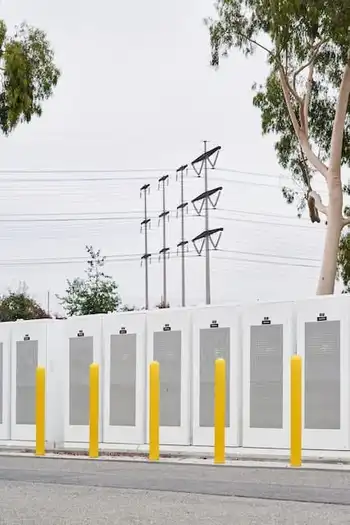New Jersey utility plans major solar project
By New York Times
Arc Flash Training CSA Z462 - Electrical Safety Essentials
Our customized live online or in‑person group training can be delivered to your staff at your location.

- Live Online
- 6 hours Instructor-led
- Group Training Available
The project, which the utility must first present to state regulators for approval, would also include putting solar panels on schools and municipal buildings, low-income housing and areas like closed garbage dumps.
The utility expects to spend $773 million on the project, which it said would generate 120 megawatts of electricity, one-third of which should come from the panels on utility poles. That amounts to barely 1 percent of the power consumed in the state, but is about 7 percent of the stateÂ’s goal of power generated from renewable energy sources by 2020.
By then, 22.5 percent of the stateÂ’s electricity is supposed to come from renewable sources, according to New JerseyÂ’s energy master plan.
Most solar panels on utility and municipal properties power single items, like traffic lights and parking meters. These panels, however, would feed directly into the electrical grid. By selling the electricity into the wholesale market, the utility expects to offset some of the cost of installing the panels.
The project would add about 10 cents to each customer’s monthly bill in the first year and as much as 35 cents in subsequent years. It comes at a time when many renewable energy installations — including those on homes — are being scaled back because of the lack of money or the higher cost of loans.
“We saw how the financial crunch has really brought renewables to a grinding halt, and this is a way to get it back going and a way to make sure all our customers benefit,” said Ralph Izzo, the chief executive of Public Service Enterprise Group, the utility’s parent company.
In addition to raising money by selling the panelsÂ’ electricity, PSE&G also expects to receive a federal tax credit and income from selling the state renewable energy credits that accrue when solar energy is produced.
The bulk of the money for the project, however, would come from new bonds and equity from Public Service Enterprise. Mr. Izzo said he did not expect his utility to have difficulty issuing bonds in the shaky debt markets, and added that the price of installing the panels — about $6.44 for each watt produced — was far lower than just a few years ago.
Other power companies in the region, including the Long Island Power Authority and Con Edison, have announced other, less ambitious solar energy projects in recent months. And others have proposed electrifying about 20 dams in New Jersey. A subsidiary of Public Service Enterprise is also part of a venture to install 96 wind turbines as far as 20 miles offshore to produce up to 346 megawatts of electricity.
But solar power is the most prominent renewable energy source in New Jersey, which ranks second behind California in producing solar energy. As a result, the number of companies that install solar energy equipment has blossomed. By starting such a large-scale project, the utility is providing much-needed stimulus to the stateÂ’s economy.
“PSE&G is taking solar to another level,” said Scott A. Weiner, a partner at the solar energy development company Resource Energy Systems and the former commissioner of the state’s Department of Environmental Protection and Energy. “They are stepping up to facilitate the solar market in New Jersey and to contribute to achieve public policy objectives.”
But there are many hurdles. Solar panels mounted on utility poles would not rotate as the sun crosses the sky, which means they would produce peak amounts of power for only about six hours a day, or less time if it is cloudy or snowing.
Some 40-foot poles cannot be used because their view of the sun is blocked by trees or buildings. If the utility cannot find enough of its own poles to use, it will contract with Verizon and other companies.
Unlike power plants, which require a large amount of money to spent up front, PSE&G can begin recouping its investment as the solar panels are installed. Still, rate payers should not expect immediate returns.
“This type of investment is long term, so you’re not going to see the benefits right away,” said Upendra J. Chivukula, the chairman of the Telecommunications and Utilities Committee in the State Assembly. “But if you don’t do it now, you’re never going to become energy independent.”











